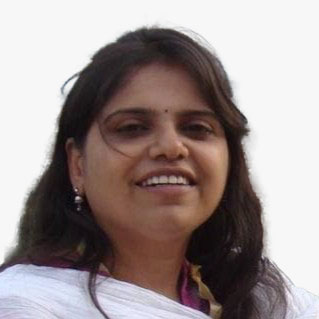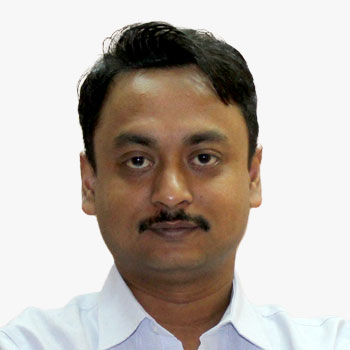

Jan Slaats has over 24 years of experience in conservation GIS for TNC, a leading global conservation NGO, with a mission to conserve the lands and waters on which all life depends. Based in Minnesota, he provides geospatial software and services to TNCs geospatial community of over 1,800 staff and manages the organization's Esri Enterprise account. He serves on the Conservancy's Geospatial Leadership Council to help design a strategic, community-driven collective vision for geospatial technology within the organization. Jan also supports 48 non-profit partner conservation NGOs, working in 145 locations around the Globe.
JAN SLAATS
 JAN SLAATS
Geospatial Application Engineer , The Nature Conservancy , USA
JAN SLAATS
Geospatial Application Engineer , The Nature Conservancy , USA
Jan Slaats has over 24 years of experience in conservation GIS for TNC, a leading global conservation NGO, with a mission to conserve the lands and waters on which all life depends. Based in Minnesota, he provides geospatial software and services to TNCs geospatial community of over 1,800 staff and manages the organization's Esri Enterprise account. He serves on the Conservancy's Geospatial Leadership Council to help design a strategic, community-driven collective vision for geospatial technology within the organization. Jan also supports 48 non-profit partner conservation NGOs, working in 145 locations around the Globe.

Jan Slaats has over 24 years of experience in conservation GIS for TNC, a leading global conservation NGO, with a mission to conserve the lands and waters on which all life depends. Based in Minnesota, he provides geospatial software and services to TNCs geospatial community of over 1,800 staff and manages the organization's Esri Enterprise account. He serves on the Conservancy's Geospatial Leadership Council to help design a strategic, community-driven collective vision for geospatial technology within the organization. Jan also supports 48 non-profit partner conservation NGOs, working in 145 locations around the Globe.
Geospatial Application Engineer | The Nature Conservancy | USA

Matthew Pennells
Global Community Engagement Director | Esri | UAE


Co-Founder and Director of Swift Geospatial, Michael Breetzke, the role is to promote business development. His background is based in remote sensing and GIS with BSc Geography degree from the University of Pretoria. At present the passion lies within sustainability monitoring and bringing geospatial analysis to all and not just those with geospatial skills.
Abstract
Leveraging high temporal satellite imagery for forestry monitoring
Natural forestry monitoring is based on satellite imagery technology. The topic will cover the requirement for transparency and monitoring of deforestation as well as how best this can be achieved using satellite imagery for decision support and traceability.
Michael Breetzke
 Michael Breetzke
Director, Business Development , Swift Geospatial , South Africa
Michael Breetzke
Director, Business Development , Swift Geospatial , South Africa
Co-Founder and Director of Swift Geospatial, Michael Breetzke, the role is to promote business development. His background is based in remote sensing and GIS with BSc Geography degree from the University of Pretoria. At present the passion lies within sustainability monitoring and bringing geospatial analysis to all and not just those with geospatial skills.
Abstract
Leveraging high temporal satellite imagery for forestry monitoring
Natural forestry monitoring is based on satellite imagery technology. The topic will cover the requirement for transparency and monitoring of deforestation as well as how best this can be achieved using satellite imagery for decision support and traceability.

Co-Founder and Director of Swift Geospatial, Michael Breetzke, the role is to promote business development. His background is based in remote sensing and GIS with BSc Geography degree from the University of Pretoria. At present the passion lies within sustainability monitoring and bringing geospatial analysis to all and not just those with geospatial skills.
Abstract
Leveraging high temporal satellite imagery for forestry monitoring
Natural forestry monitoring is based on satellite imagery technology. The topic will cover the requirement for transparency and monitoring of deforestation as well as how best this can be achieved using satellite imagery for decision support and traceability.
Director, Business Development | Swift Geospatial | South Africa


Dr. Ni is the director of the Center for Environmental Studies at National Central University. His main research themes are numerical modeling of hydro-mechanical-chemical processes in porous and fractured media, hydraulic tests and inverse problems, groundwater and surface water interactions, submarine groundwater discharge, and IoT groundwater monitoring.
Abstract
An interactive geospatial platform for earth environmental data visualization and real-time numerical modeling
Groundwater is one of the relatively stable water resources in most countries compared to surface water resources. The increasing variability of climate conditions has made the sustainable management of groundwater resources a challenging task. The web platform provides an excellent open environment for groundwater investigations. However, most groundwater-relevant web platforms mainly focus on data visualization. The data (points, polylines, and polygons) and pre-analysis results (i.e., the figures) overlap a street map to indicate the location of interests and quantify the influenced regions of groundwater hazards. Such a one-way interaction framework has significantly limited the implementations of measurement data and groundwater-relevant applications. The study aims to develop an online web-based platform for groundwater data visualization, temporal and spatial data analysis, mesh generation and flow modeling. The study integrates multiple program languages such as Java, C, Python, and FORTRAN to bridge the data flow and online visualization. The interactive real-time web environment enables users to screen temporal and spatial measurements on the web map, conduct online data analyses, and develop numerical groundwater models. With a well-designed database and numerous modules for data analyses and modeling, the platform allows users to share data and develop collaborative activities. The built-in analysis tools can also improve the efficiency of groundwater management and decision-making processes.
Chuen-Fa Ni
 Chuen-Fa Ni
Professor and Director , Center for Environmental Studies, National Central University , Taiwan R.O.C.
Chuen-Fa Ni
Professor and Director , Center for Environmental Studies, National Central University , Taiwan R.O.C.
Dr. Ni is the director of the Center for Environmental Studies at National Central University. His main research themes are numerical modeling of hydro-mechanical-chemical processes in porous and fractured media, hydraulic tests and inverse problems, groundwater and surface water interactions, submarine groundwater discharge, and IoT groundwater monitoring.
Abstract
An interactive geospatial platform for earth environmental data visualization and real-time numerical modeling
Groundwater is one of the relatively stable water resources in most countries compared to surface water resources. The increasing variability of climate conditions has made the sustainable management of groundwater resources a challenging task. The web platform provides an excellent open environment for groundwater investigations. However, most groundwater-relevant web platforms mainly focus on data visualization. The data (points, polylines, and polygons) and pre-analysis results (i.e., the figures) overlap a street map to indicate the location of interests and quantify the influenced regions of groundwater hazards. Such a one-way interaction framework has significantly limited the implementations of measurement data and groundwater-relevant applications. The study aims to develop an online web-based platform for groundwater data visualization, temporal and spatial data analysis, mesh generation and flow modeling. The study integrates multiple program languages such as Java, C, Python, and FORTRAN to bridge the data flow and online visualization. The interactive real-time web environment enables users to screen temporal and spatial measurements on the web map, conduct online data analyses, and develop numerical groundwater models. With a well-designed database and numerous modules for data analyses and modeling, the platform allows users to share data and develop collaborative activities. The built-in analysis tools can also improve the efficiency of groundwater management and decision-making processes.

Dr. Ni is the director of the Center for Environmental Studies at National Central University. His main research themes are numerical modeling of hydro-mechanical-chemical processes in porous and fractured media, hydraulic tests and inverse problems, groundwater and surface water interactions, submarine groundwater discharge, and IoT groundwater monitoring.
Abstract
An interactive geospatial platform for earth environmental data visualization and real-time numerical modeling
Groundwater is one of the relatively stable water resources in most countries compared to surface water resources. The increasing variability of climate conditions has made the sustainable management of groundwater resources a challenging task. The web platform provides an excellent open environment for groundwater investigations. However, most groundwater-relevant web platforms mainly focus on data visualization. The data (points, polylines, and polygons) and pre-analysis results (i.e., the figures) overlap a street map to indicate the location of interests and quantify the influenced regions of groundwater hazards. Such a one-way interaction framework has significantly limited the implementations of measurement data and groundwater-relevant applications. The study aims to develop an online web-based platform for groundwater data visualization, temporal and spatial data analysis, mesh generation and flow modeling. The study integrates multiple program languages such as Java, C, Python, and FORTRAN to bridge the data flow and online visualization. The interactive real-time web environment enables users to screen temporal and spatial measurements on the web map, conduct online data analyses, and develop numerical groundwater models. With a well-designed database and numerous modules for data analyses and modeling, the platform allows users to share data and develop collaborative activities. The built-in analysis tools can also improve the efficiency of groundwater management and decision-making processes.
Professor and Director | Center for Environmental Studies, National Central University | Taiwan R.O.C.


Bhavyata Jethva is an environmentalist committed to work for solving water crisis of India. Her professional career spans over 18 years, working for bringing balance in nature in different countries like the UK, UAE, Germany and now in India. She is also a former member of the Chartered Institute of Environmentalists, UK. Currently, she is associated with the Limca Book of Records featured River Rejuvenation Social Projects by an NGO named VVKI in India. Her projects have been awarded for GeoSpatial Excellence in 2019 in India.
Abstract
Achieving SDGs: A Case Study of River Rejuvenation Projects by NGO (VVKI)
Drying up of perennial rivers, continuous ground water extraction but no recharge, imbalance in nature led to water stress and water unavailability in dry summer months in India, resulting in reduced farming activities and even farmer suicides. An NGO named VVKI came forward to work for river rejuvenation social projects to solve the water crisis by public private partnership and in the last one decade, has successfully demonstrated the impact it can create using GeoSpatial Technology in millions of lives. This topic needs global attention for more support from all stakeholders (like farmers, corporates, government agencies, other NGOs, Volunteer Individual groups, Students) and engagement of more stakeholders wanting to collaborate in this field. Hence, I would like to present this case study.
Bhavyata Jethva
 Bhavyata Jethva
Secretary, National Director , River Rejuvenation Projects, VVKI, The Art of Living , India
Bhavyata Jethva
Secretary, National Director , River Rejuvenation Projects, VVKI, The Art of Living , India
Bhavyata Jethva is an environmentalist committed to work for solving water crisis of India. Her professional career spans over 18 years, working for bringing balance in nature in different countries like the UK, UAE, Germany and now in India. She is also a former member of the Chartered Institute of Environmentalists, UK. Currently, she is associated with the Limca Book of Records featured River Rejuvenation Social Projects by an NGO named VVKI in India. Her projects have been awarded for GeoSpatial Excellence in 2019 in India.
Abstract
Achieving SDGs: A Case Study of River Rejuvenation Projects by NGO (VVKI)
Drying up of perennial rivers, continuous ground water extraction but no recharge, imbalance in nature led to water stress and water unavailability in dry summer months in India, resulting in reduced farming activities and even farmer suicides. An NGO named VVKI came forward to work for river rejuvenation social projects to solve the water crisis by public private partnership and in the last one decade, has successfully demonstrated the impact it can create using GeoSpatial Technology in millions of lives. This topic needs global attention for more support from all stakeholders (like farmers, corporates, government agencies, other NGOs, Volunteer Individual groups, Students) and engagement of more stakeholders wanting to collaborate in this field. Hence, I would like to present this case study.

Bhavyata Jethva is an environmentalist committed to work for solving water crisis of India. Her professional career spans over 18 years, working for bringing balance in nature in different countries like the UK, UAE, Germany and now in India. She is also a former member of the Chartered Institute of Environmentalists, UK. Currently, she is associated with the Limca Book of Records featured River Rejuvenation Social Projects by an NGO named VVKI in India. Her projects have been awarded for GeoSpatial Excellence in 2019 in India.
Abstract
Achieving SDGs: A Case Study of River Rejuvenation Projects by NGO (VVKI)
Drying up of perennial rivers, continuous ground water extraction but no recharge, imbalance in nature led to water stress and water unavailability in dry summer months in India, resulting in reduced farming activities and even farmer suicides. An NGO named VVKI came forward to work for river rejuvenation social projects to solve the water crisis by public private partnership and in the last one decade, has successfully demonstrated the impact it can create using GeoSpatial Technology in millions of lives. This topic needs global attention for more support from all stakeholders (like farmers, corporates, government agencies, other NGOs, Volunteer Individual groups, Students) and engagement of more stakeholders wanting to collaborate in this field. Hence, I would like to present this case study.
Secretary, National Director | River Rejuvenation Projects, VVKI, The Art of Living | India


Brooke leads research and development of geospatial solutions for the homeland security and disaster response communities. She has been instrumental in developing AI/ML tools to assess remotely-sensed imagery to detect natural hazards and assess and predict impacts to communities. This work has involved development of novel models to identify and prioritize risk and isolated communities used to guide response operations for the Office of Response and Recovery.
Brooke Hatcher
 Brooke Hatcher
Geospatial Data Lead , New Light Technologies , USA
Brooke Hatcher
Geospatial Data Lead , New Light Technologies , USA
Brooke leads research and development of geospatial solutions for the homeland security and disaster response communities. She has been instrumental in developing AI/ML tools to assess remotely-sensed imagery to detect natural hazards and assess and predict impacts to communities. This work has involved development of novel models to identify and prioritize risk and isolated communities used to guide response operations for the Office of Response and Recovery.

Brooke leads research and development of geospatial solutions for the homeland security and disaster response communities. She has been instrumental in developing AI/ML tools to assess remotely-sensed imagery to detect natural hazards and assess and predict impacts to communities. This work has involved development of novel models to identify and prioritize risk and isolated communities used to guide response operations for the Office of Response and Recovery.
Geospatial Data Lead | New Light Technologies | USA


Myself, Chiranjit Guha, completed my post-graduation (Master of Technology) in Applied Geology from Indian Institute of Technology Roorkee in 2005. I did my graduation from Presidency College (Calcutta University) with Geology honors and Chemistry, mathematics as minors. After completion of my post-graduation I joined Foundation for Ecological Security and posted in Bhilwara, Rajasthan (India). My job profile was to carry out hydrogeological survey in all the remote villages where FES is working to ensure water availability through participatory ground water management after taking care of natural resources with community mobilization. I worked for Bhilwara, Udaipur, Pratapgarh, Mandsaur, Ujjain, Agar, Mandla, Yavatmal, Angul, Koraput, Anand, Dahod, Anantapur, Chittoor, Kolar, Chikaballapur area on the same and helping FES field teams to understand the local hydrogeological features and characteristics for better decision making. I have been closely associated with Clemson University on carry out hydrogeological research project in Agar, Madhya Pradesh. I visited Clemson University (South Carolina) to spend months in summer camp on hydrogeological investigation techniques and also helped their students by teaching geophysical survey on field. In 2011, I joined Environment Engineering department of M.N.Dastur & Co (Pvt) Ltd, (an engineering consultant company) where I closely worked with RioTinto for their diamond mine project nearby Khajuraho (Bunder) for 2 and half years on mine pit hydrogeology. At the same time I also worked for different clients like Tata Steel, Arcelor Mittal, Bandel Thermal Power Corporation etc on hydrogeological investigation. During this tenure I have been accredited to NABET (National Accreditation Board of Education and Training) to work as a functional expert on EIA (Environmental Impact Assessment). In 2013, I joined back to FES and presently working on India Observatory program of FES.
Abstract
Tool based Hydrogeological approach for efficacy and efficiency to address soil and water conservation in India
India is the largest user of groundwater in the world. It uses an estimated 230 cubic kilometers of groundwater per year - over a quarter of the global total. More than 60% of irrigated agriculture and 85% of drinking water supplies are dependent on groundwater in the country. Moreover groundwater acts a critical buffer against the variability of monsoon rains. Despite the valuable nature of the resource, 29% of groundwater blocks are semi-critical, critical, or overexploited, and the situation is deteriorating rapidly. Climate change will further strain groundwater resources. This will have serious implications for the sustainability of agriculture, long-term food security, livelihoods, and economic growth. It is estimated that over a quarter of the country's harvest will be at risk. India has both hard-rock and alluvial aquifers which differ considerably in their physical and socioeconomic profiles and require very different sets of solutions at both the macro and micro levels. There are levels of complexity to understanding the nature of recharge potentiality of a specific area because of varied rock types, slope and landuse/landcover. Lack of availability of scientific information on geological attributes at the village level resists village community to make an informed decision on soil and water conservation measures. The treatment plan for the area therefore needs to be made after assessing the different physical properties of the land. To aid in this process, a composite approach has been identified with the help of spatial data of different resolutions but at a uniform scale under the GIS umbrella and made available through an android application (GIS enabled) for informed decision making on the field. The tool has been largely adopted by different state governments and NGOs to prepare more than 400 thousand plans for soil and water conservation. This decision support tool provides location specific information through colour coded maps in a user friendly manner that enable village communities to plan and develop estimates of the soil and water conservation interventions without help of Engineers and Internet at field.
Chiranjit Guha
 Chiranjit Guha
Principal Consultant, Analytics , Foundation for Ecological Security , India
Chiranjit Guha
Principal Consultant, Analytics , Foundation for Ecological Security , India
Myself, Chiranjit Guha, completed my post-graduation (Master of Technology) in Applied Geology from Indian Institute of Technology Roorkee in 2005. I did my graduation from Presidency College (Calcutta University) with Geology honors and Chemistry, mathematics as minors. After completion of my post-graduation I joined Foundation for Ecological Security and posted in Bhilwara, Rajasthan (India). My job profile was to carry out hydrogeological survey in all the remote villages where FES is working to ensure water availability through participatory ground water management after taking care of natural resources with community mobilization. I worked for Bhilwara, Udaipur, Pratapgarh, Mandsaur, Ujjain, Agar, Mandla, Yavatmal, Angul, Koraput, Anand, Dahod, Anantapur, Chittoor, Kolar, Chikaballapur area on the same and helping FES field teams to understand the local hydrogeological features and characteristics for better decision making. I have been closely associated with Clemson University on carry out hydrogeological research project in Agar, Madhya Pradesh. I visited Clemson University (South Carolina) to spend months in summer camp on hydrogeological investigation techniques and also helped their students by teaching geophysical survey on field. In 2011, I joined Environment Engineering department of M.N.Dastur & Co (Pvt) Ltd, (an engineering consultant company) where I closely worked with RioTinto for their diamond mine project nearby Khajuraho (Bunder) for 2 and half years on mine pit hydrogeology. At the same time I also worked for different clients like Tata Steel, Arcelor Mittal, Bandel Thermal Power Corporation etc on hydrogeological investigation. During this tenure I have been accredited to NABET (National Accreditation Board of Education and Training) to work as a functional expert on EIA (Environmental Impact Assessment). In 2013, I joined back to FES and presently working on India Observatory program of FES.
Abstract
Tool based Hydrogeological approach for efficacy and efficiency to address soil and water conservation in India
India is the largest user of groundwater in the world. It uses an estimated 230 cubic kilometers of groundwater per year - over a quarter of the global total. More than 60% of irrigated agriculture and 85% of drinking water supplies are dependent on groundwater in the country. Moreover groundwater acts a critical buffer against the variability of monsoon rains. Despite the valuable nature of the resource, 29% of groundwater blocks are semi-critical, critical, or overexploited, and the situation is deteriorating rapidly. Climate change will further strain groundwater resources. This will have serious implications for the sustainability of agriculture, long-term food security, livelihoods, and economic growth. It is estimated that over a quarter of the country's harvest will be at risk. India has both hard-rock and alluvial aquifers which differ considerably in their physical and socioeconomic profiles and require very different sets of solutions at both the macro and micro levels. There are levels of complexity to understanding the nature of recharge potentiality of a specific area because of varied rock types, slope and landuse/landcover. Lack of availability of scientific information on geological attributes at the village level resists village community to make an informed decision on soil and water conservation measures. The treatment plan for the area therefore needs to be made after assessing the different physical properties of the land. To aid in this process, a composite approach has been identified with the help of spatial data of different resolutions but at a uniform scale under the GIS umbrella and made available through an android application (GIS enabled) for informed decision making on the field. The tool has been largely adopted by different state governments and NGOs to prepare more than 400 thousand plans for soil and water conservation. This decision support tool provides location specific information through colour coded maps in a user friendly manner that enable village communities to plan and develop estimates of the soil and water conservation interventions without help of Engineers and Internet at field.

Myself, Chiranjit Guha, completed my post-graduation (Master of Technology) in Applied Geology from Indian Institute of Technology Roorkee in 2005. I did my graduation from Presidency College (Calcutta University) with Geology honors and Chemistry, mathematics as minors. After completion of my post-graduation I joined Foundation for Ecological Security and posted in Bhilwara, Rajasthan (India). My job profile was to carry out hydrogeological survey in all the remote villages where FES is working to ensure water availability through participatory ground water management after taking care of natural resources with community mobilization. I worked for Bhilwara, Udaipur, Pratapgarh, Mandsaur, Ujjain, Agar, Mandla, Yavatmal, Angul, Koraput, Anand, Dahod, Anantapur, Chittoor, Kolar, Chikaballapur area on the same and helping FES field teams to understand the local hydrogeological features and characteristics for better decision making. I have been closely associated with Clemson University on carry out hydrogeological research project in Agar, Madhya Pradesh. I visited Clemson University (South Carolina) to spend months in summer camp on hydrogeological investigation techniques and also helped their students by teaching geophysical survey on field. In 2011, I joined Environment Engineering department of M.N.Dastur & Co (Pvt) Ltd, (an engineering consultant company) where I closely worked with RioTinto for their diamond mine project nearby Khajuraho (Bunder) for 2 and half years on mine pit hydrogeology. At the same time I also worked for different clients like Tata Steel, Arcelor Mittal, Bandel Thermal Power Corporation etc on hydrogeological investigation. During this tenure I have been accredited to NABET (National Accreditation Board of Education and Training) to work as a functional expert on EIA (Environmental Impact Assessment). In 2013, I joined back to FES and presently working on India Observatory program of FES.
Abstract
Tool based Hydrogeological approach for efficacy and efficiency to address soil and water conservation in India
India is the largest user of groundwater in the world. It uses an estimated 230 cubic kilometers of groundwater per year - over a quarter of the global total. More than 60% of irrigated agriculture and 85% of drinking water supplies are dependent on groundwater in the country. Moreover groundwater acts a critical buffer against the variability of monsoon rains. Despite the valuable nature of the resource, 29% of groundwater blocks are semi-critical, critical, or overexploited, and the situation is deteriorating rapidly. Climate change will further strain groundwater resources. This will have serious implications for the sustainability of agriculture, long-term food security, livelihoods, and economic growth. It is estimated that over a quarter of the country's harvest will be at risk. India has both hard-rock and alluvial aquifers which differ considerably in their physical and socioeconomic profiles and require very different sets of solutions at both the macro and micro levels. There are levels of complexity to understanding the nature of recharge potentiality of a specific area because of varied rock types, slope and landuse/landcover. Lack of availability of scientific information on geological attributes at the village level resists village community to make an informed decision on soil and water conservation measures. The treatment plan for the area therefore needs to be made after assessing the different physical properties of the land. To aid in this process, a composite approach has been identified with the help of spatial data of different resolutions but at a uniform scale under the GIS umbrella and made available through an android application (GIS enabled) for informed decision making on the field. The tool has been largely adopted by different state governments and NGOs to prepare more than 400 thousand plans for soil and water conservation. This decision support tool provides location specific information through colour coded maps in a user friendly manner that enable village communities to plan and develop estimates of the soil and water conservation interventions without help of Engineers and Internet at field.
Principal Consultant, Analytics | Foundation for Ecological Security | India